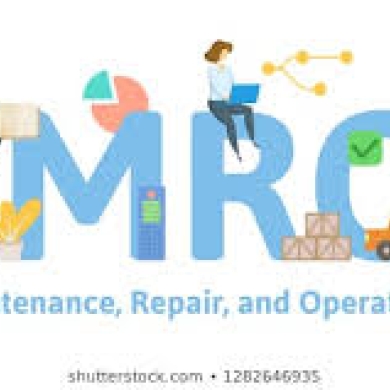24 avril 2020
Impact of COVID-19 on commercial MRO
Opinion: How COVID-19 Has Already Changed Everything David Marcontell April 17, 2020 Oliver Wyman To say that COVID-19 is having a devastating effect on aviation is an understatement. With hundreds of millions of people living under stay-at-home orders and unemployment rates in the U.S. and Europe rising faster than they ever have, global airline capacity in available seat-miles is down 59% compared to what it was at this time last year. The International Air Transport Association is forecasting airline losses of $252 billion—a tally that has been revised upward twice in the last six weeks. At my own firm, we cut our 2020 forecast for demand in the MRO market by $17-35 billion to reflect the nearly 11,000 aircraft that have been taken out of service and the 50% drop in daily utilization for those that are still flying. Oliver Wyman also lowered its projection for new aircraft deliveries by 50-60% versus 2019 after a comprehensive review of original equipment manufacturer (OEM) build projections versus airline demand. Deliveries for most current-production models are expected to drop 50% or more in 2021 and 2022. As a result, we project that it will be well into 2022 before the global MRO market might return to the size it was before COVID-19. This crisis has gone well past the point of a V-shaped recovery. Lasting damage has been done, and not unlike the Sept. 11, 2001, terrorist attacks or the 2008 global financial crisis, the behavior of governments, businesses and the public is likely to have been changed forever. Following 9/11, it took nearly 18 months for passenger traffic to return to its previous level, and when it finally did, travel looked very different than it had before the attacks. Passenger anxiety and the “hassle” factor associated with heightened airport security caused people to stay at home or drive. It took nearly a decade for the public to adjust to the new normal of commercial air travel. In a post-COVID-19 environment, it is not unrealistic to expect new screening protocols to be put in place to help manage the risk of reinfection or an emergence of new hot spots. Already, international public health officials are considering such tools as immunization passports and body temperature scanning (already in use by some airports) that would be applicable to everyone on every flight, much like our security screening is today. In addition, virtual meeting technology—adoption of which is expanding quickly out of necessity—is now becoming business as usual for work and socializing, and it's unlikely we will turn away from it entirely even when the disease is a memory. These combined influences will undoubtedly slow passenger traffic growth. COVID-19 also will change the industry's labor landscape. For the past several years, the aviation industry has been concerned with a looming labor shortage. Before the coronavirus crisis, regional airlines were already being forced to shut down because they couldn't find enough pilots; others were trimming flight schedules. A stunning 90% of the Aeronautical Repair Station Association's 2019 survey reported difficulty finding enough technicians—a situation that cost ARSA members more than $100 million per month in unrealized revenue. COVID-19 will change all that. With the global fleet expected to have 1,200 fewer airplanes flying in 2021 than 2019, the industry will need roughly 18,000 fewer pilots and 8,400 fewer aviation maintenance technicians in 2021. The depth of the cutbacks is the equivalent of grounding 1-2 years' worth of graduates from training and certification programs around the world. How many would-be pilots and mechanics may now be dissuaded from pursuing a career in aviation with those statistics? If people turn away now, when aviation comes back it may be a few years before that candidate pipeline is restored. Another example of permanent change from aviation's last cataclysmic event was the consolidation of the OEM supply chain after the Great Recession. Tier 1 and Tier 2 suppliers went on a buying spree, gobbling up smaller companies. While the post-COVID-19 business environment will undoubtedly be hazardous for these same suppliers, the consolidation of the past decade has put them in a better position to survive this upheaval. Can the same be said for the MRO community, which comprises many smaller, privately held and family-owned companies? I suspect not. While governments are scrambling to provide financial relief for small businesses hurt by the global economic shutdown, these efforts will likely fall short. The result might well be a further consolidated MRO community dominated by the OEMs plus a handful of fully integrated firms that provide support to both OEMs and airlines. COVID-19 is a painful reminder that aviation always will be a cyclical business. With each cycle, the industry renews itself, performing better than before. One should expect this cycle to be no different. The biggest question is: How long will this cycle last? —David Marcontell, Oliver Wyman partner and general manager of its Cavok division, has aftermarket experience with leading OEMs, airlines, MROs and financial services.

